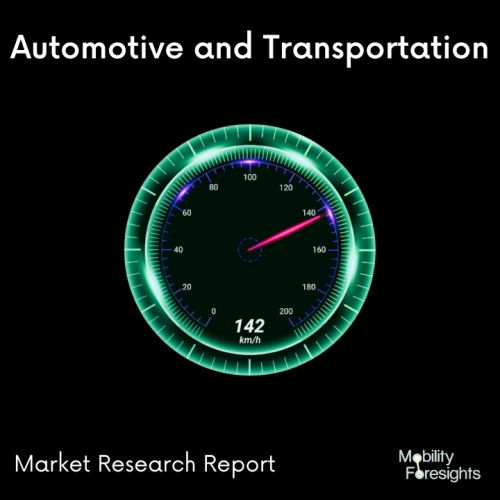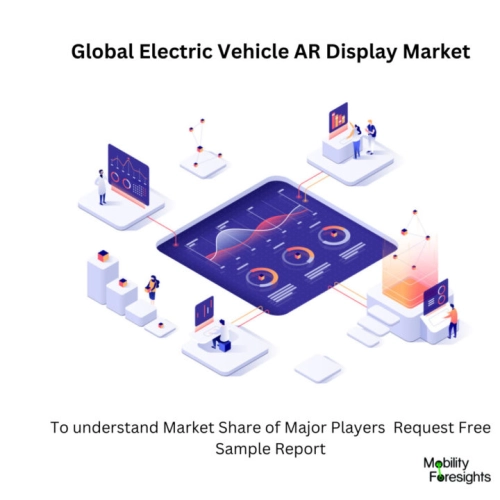
- Get in Touch with Us

Last Updated: Apr 25, 2025 | Study Period: 2023-2030
One of the technical options capable of giving an interactive experience for various forms of information transmission is augmented reality heads-up displays. The speedometer, land guiding, and directions are just a few examples of the information that AR may currently display.
While AR encourages manufacturing, inspection, and retrofitting. Engineers can make changes to a car to improve it by being able to see how it will appear in advance. AR enhances both plant floor production and inspection. It aids designers in coordinating many design elements with real-world automobile models.

The Global Electric vehicle AR display market accounted for $XX Billion in 2022 and is anticipated to reach $XX Billion by 2030, registering a CAGR of XX% from 2023 to 2030.
Hyundai introduced the IONIQ 5, a new electric vehicle with augmented reality (AR) head-up displays for drivers. The addition of this AR HUD effectively converts the windscreen of the car into a display screen.
Drivers have the option to use augmented reality (AR) technology to project pertinent information, such as turn-by-turn navigation, high-tech safety features, and the vehicle's surroundings, approximately 4 feet (44 inches) in front of their line of sight on the road.
Hyundai claims that by changing the way information is shown in its cars, drivers will be able to process information more quickly while maintaining focus on the road in front of them.
Of course, augmented reality is what they like to focus on, but for car people, the vehicle does come with a tonne of other bells and whistles, like ultra-fast charging from 10 to 80 percent in just 18 minutes, a variety of different battery and motor layouts that will offer travel ranges from 244 to 300 miles, with all configurations having a top speed of 115 MPH, and the ability to tow a trailer with a capacity of up to 1,500 lbs.
The IONIQ 5 is also built on Hyundai's unique Electric-Global Modular Platform (E-GMP), which, according to the automaker, provides for a larger cabin and improved performance.
| Sl no | Topic |
| 1 | Market Segmentation |
| 2 | Scope of the report |
| 3 | Abbreviations |
| 4 | Research Methodology |
| 5 | Executive Summary |
| 6 | Introduction |
| 7 | Insights from Industry stakeholders |
| 8 | Cost breakdown of Product by sub-components and average profit margin |
| 9 | Disruptive innovation in the Industry |
| 10 | Technology trends in the Industry |
| 11 | Consumer trends in the industry |
| 12 | Recent Production Milestones |
| 13 | Component Manufacturing in US, EU and China |
| 14 | COVID-19 impact on overall market |
| 15 | COVID-19 impact on Production of components |
| 16 | COVID-19 impact on Point of sale |
| 17 | Market Segmentation, Dynamics and Forecast by Geography, 2022-2030 |
| 18 | Market Segmentation, Dynamics and Forecast by Product Type, 2022-2030 |
| 19 | Market Segmentation, Dynamics and Forecast by Application, 2022-2030 |
| 20 | Market Segmentation, Dynamics and Forecast by End use, 2022-2030 |
| 21 | Product installation rate by OEM, 2022 |
| 22 | Incline/Decline in Average B-2-B selling price in past 5 years |
| 23 | Competition from substitute products |
| 24 | Gross margin and average profitability of suppliers |
| 25 | New product development in past 12 months |
| 26 | M&A in past 12 months |
| 27 | Growth strategy of leading players |
| 28 | Market share of vendors, 2022 |
| 29 | Company Profiles |
| 30 | Unmet needs and opportunity for new suppliers |
| 31 | Conclusion |
| 32 | Appendix |